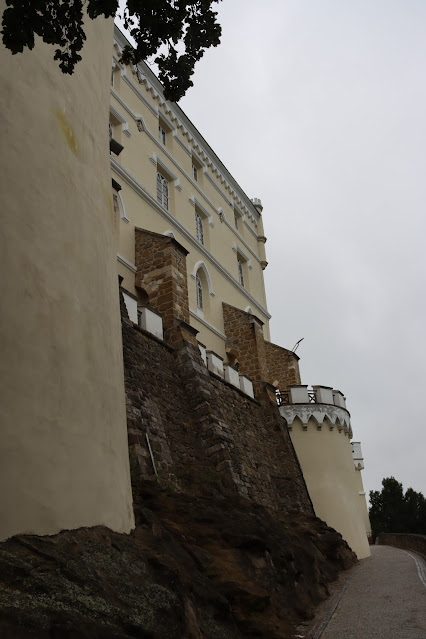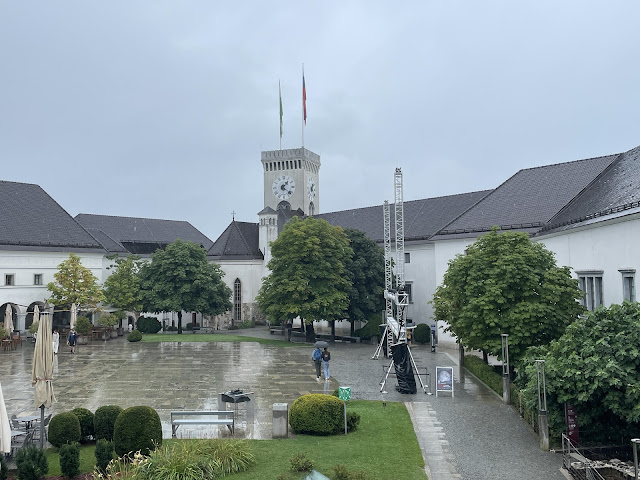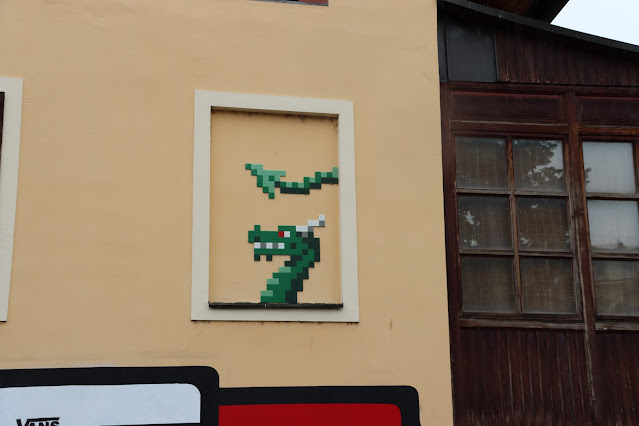We started out fairly early as we had a bit of driving to do today. We were planning on crossing over a few borders - first into Croatia to check out Trakošćan Castle and then into Slovenia to it's capital: Ljubljana.
Trakošćan Castle (Dvor Trakošćan) was built in the 1200s to monitor the road from the town of Ptuj in Slovenia to the Bednja Valley in Croatia. It is believed to be named after a Roman Fortification Arx Thacorum or after the Knights of Drachenstein who controlled the area in the Middle Ages.
It was owned by the Counts of Celje until the family died out and the castle passed through three more families before the end of the Gyulay line saw the castle taken over by the state. The King (Maximilian) gave the estate to the Drašković family who held it until they abandoned it for a mansion in nearby Hrvatsko Zagorje in the late 1700s. The abandoned castle started to fall apart and was finally renovated and updated in the 1850s. In 1944 Drašković family were forced to emigrate to Austria and the castle was Nationalised.
What began as a Romanesque fort, was updated to be a comfortable manor house in the Neo-Gothic style:
The area was pretty quiet when we arrived, as a light rain had set in. There was a small souvenir shop and toilet block but they were only manned by two people who also managed the café. We only saw one other family on our walk to the top.
 |
| Drawbridge mechanism |
 |
| Drawbridge |
We decided not to pay to explore the interior, instead to head on to Ljubljana before the weather turned.
Shortly after we got back to the car, the heavy rains started and they didn't let up until the next morning:
We found a carpark near Ljubljana castle and caught the funicular to the top. The rain was pretty heavy so we didn't get a huge amount of photos of the castle or town and the visit was a little rushed.
Ljubljana is the capital of Slovenia (officially the Republic of Slovenia). The area that forms Slovenia has had many different owners in the past - Romans, the Byzantine Empire, the Carolingian Empire, the Holy Roman Empire, The Kingdom of Hungary, the Republic of Venice, the Illyrian Provinces of Napolean's French Empire, the Austrian Empire and the Austro-Hungarian Empire.
In 1918 the area became part of the State of Slovenes, Croats and Serbs, which then merged with Montenegro and Serbia to become the Kingdom of Yugoslavia. It was annexed by the Germans in World War II and then returned to Yugoslavia after the war. In 1991 Slovenia left Yugoslavia and declared independence. The name Slovenia means country of the Slavs.
Ljubljana is the capital of Slovenia, holding a trade route between the Adriatic Sea and the Danube. The origin of the name is unknown, in Medieval times the area and town were known as Laibach, and in Italian the town is known as Lubiana.
The symbol of the town is the Ljubljana Dragon. Myths state that the slaying of the dragon released water into the area, creating the marsh and the river. It is likely the Dragon comes from the story of St George, who is the patron of the Ljubljana Castle chapel and represents paganism being defeated by Christianity.
Our first stop in the town was Ljubljana Castle. Originally built as a fortress on Castle Hill, it was built in the 1000s and completely rebuilt in the 1400s and modified in the 1500-1600s.
The castle was quite crowded and with the rain we didn't stay too long before heading back down.
From the castle we headed down toward the Town Square, where a market was taking place. At this point we were totally soaked with rain, but it was a pleasant change from being soaked with sweat.
We walked down one of the main streets, past St Nicholas' Cathedral, built in 1706:
The next stop was Robba Fountain, or the Fountain of the Three Carniolan Rivers. The fountain was built in 1751 and represents the three rivers of Carniola - Ljubljanica, Sava and Krka:
Next was Ljubljana Town Hall - built in 1483 in Gothic style and renovated in Baroque style in the early 1700s:
We then came to the first of our bridges over the River Ljubljanica - Cobblers Bridge (Šuštarski most):
From there we passed into the main square (Kongresni Trg):
 |
| Franciscan Church of the Annunciation |
 |
| Manhole Cover with the Town Coat of Arms |
Our next stop was Tromostovje (Triple Bridge). This bridge was originally constructed in the 1200s and is the oldest bridge in Ljubljana. In the 1930s it was redesigned and expanded to allow for traffic:
We then continued into Prešernov trg (Prešernov Square):
 |
| Prometheus - Running and Disembowelled after stealing fire |
 |
| Satyr started by the serpent. |
Our final stop was the one I was most looking forward to, Dragon Bridge (Zmajski most) home to statues of Ljubljana's Dragon:
























































No comments:
Post a Comment